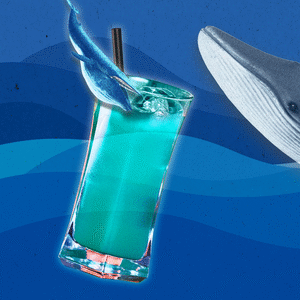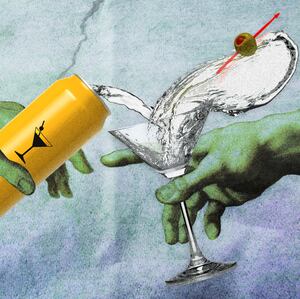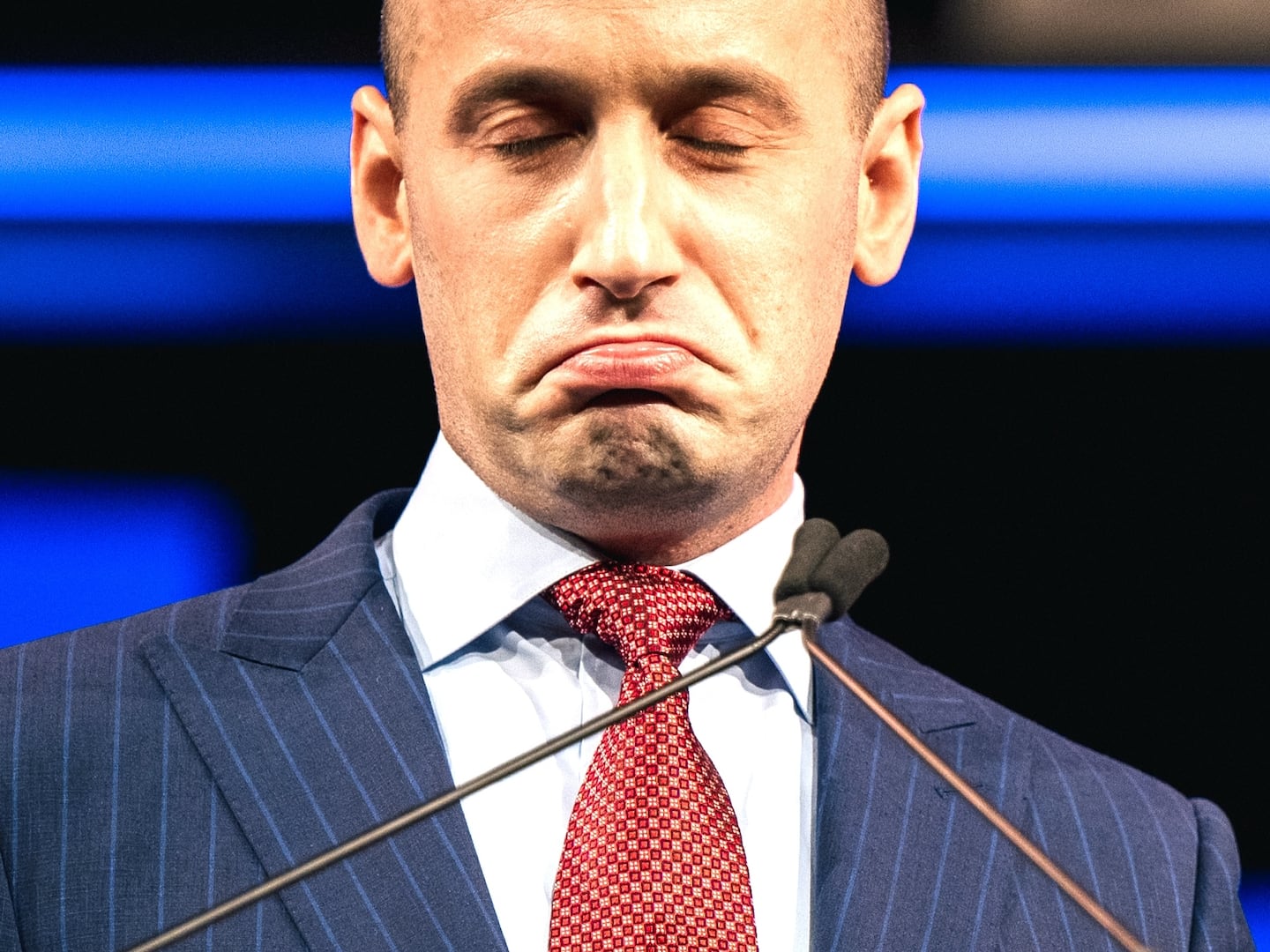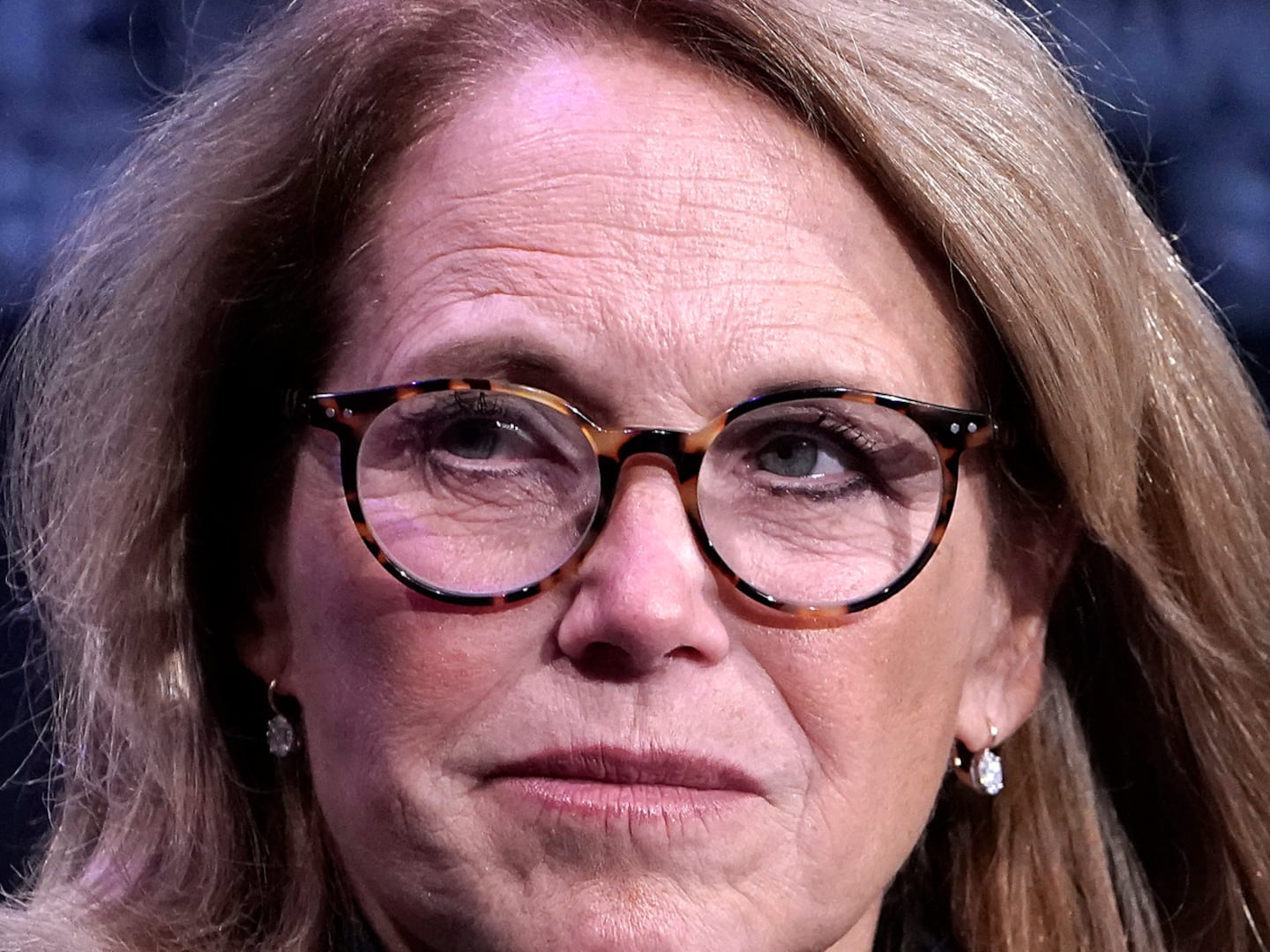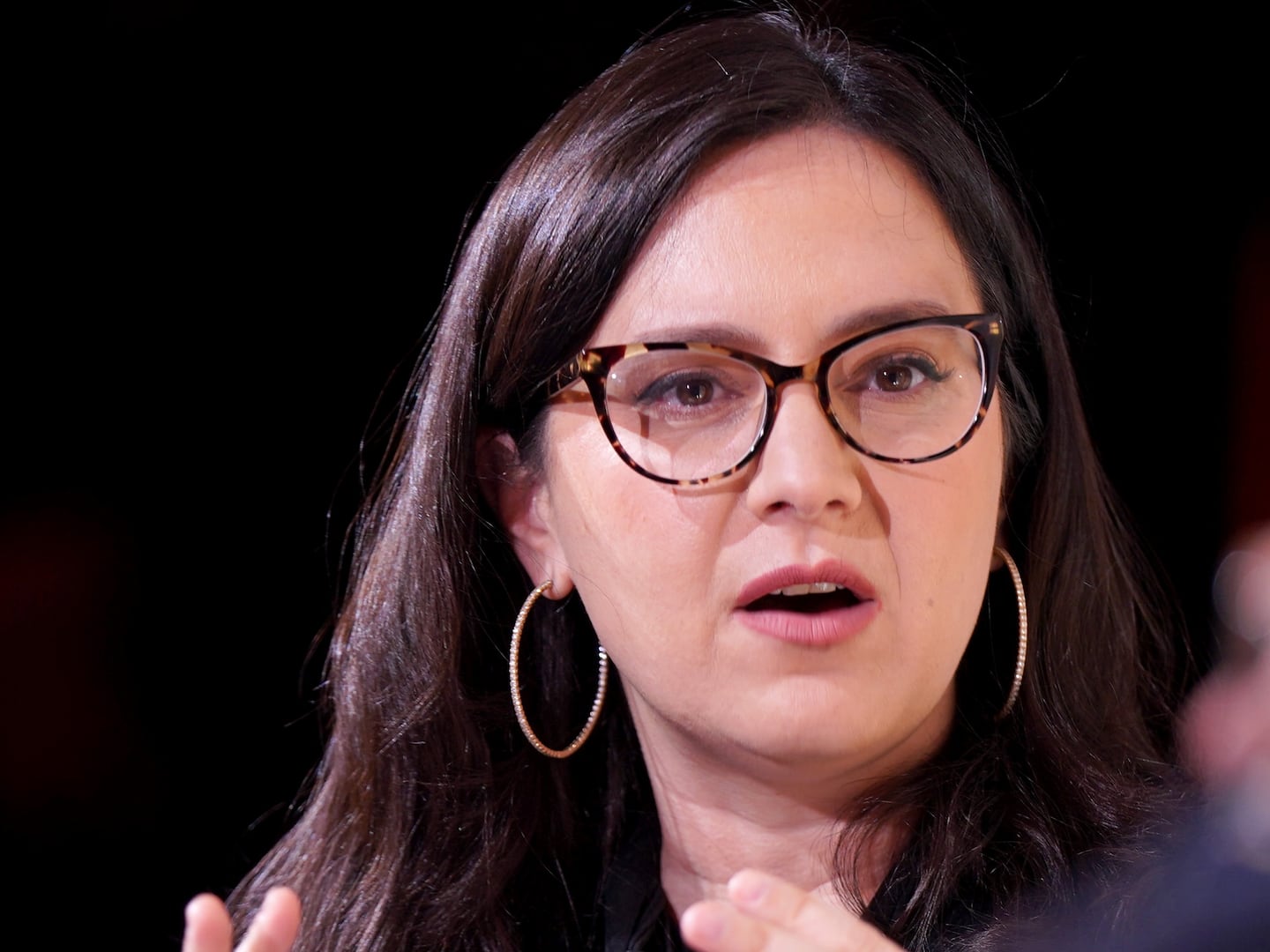How many Whiskey Cocktails can you drink? I mean, in a row.
Let’s make it easy: they’re small, no more than an ounce-and-a-half to two ounces of bourbon or rye, a teaspoon of thick sugar syrup and a couple dashes of bitters, stirred up with ice and strained into a little stemmed glass. Simple.
Now, anyone who drinks alcohol could put away one or two with no fuss at all. Three? Come on—you’re American. But dainty as they might be, these things really do add up. Four I can see causing some issues. Five—okay, now you’re drinking. I venture to say that, as long as I didn’t mind appearing like a sozzled old fool (I generally don’t) and had the next day to apply the various traditional hangover cures of my people (you know—the walking three times around the house with the salamander in the left pocket, the cold pigeon stew, the shots of hot peppermint schnapps with Worcestershire), I could probably take aboard a good six Whiskey Cocktails. Wait, how many did you say? Eight? I acknowledge your superior capacity.
Yet guess what—I’m sorry to say, but like me you’re a loser. In fact, even if you could carry off a dozen of these babies, you’d still be not just a loser, but a loser to the loser. It wouldn’t even be close, not unless you could at least triple that figure.
To the best of my knowledge, you see, the standing record for drinking cocktails is held by Randall Percy Otway Plunkett, the 13th Baron Louth (1832-1883), who set it at a cocktail drinking contest way back in 1867. Apparently, he was able to put away 36 Whiskey Cocktails, as detailed above, a number that is—fortunately—unlikely to be bettered.
I’ve been trying to piece together the circumstances of this contest since 2003, when I stumbled upon an incomplete and then-uncorroboratable account of it by the bartender who mixed the cocktails in the microfilmed pages of the New York Tribune. Over the years, I’ve been able to add snippets of corroboration, with the final piece—the identity of Lord Louth’s opponent—only falling into place recently.
Here’s what happened. In early 1867, probably in London, the 34-year-old Lord Louth, who was retired from the British Army’s 24th Regiment of Foot and occupied himself with big-boat yachting, messing with animals and relieving his unhappy tenants of some of the highest rents in Ireland, got to talking with Captain Edwin Ramsay Moodie.
Moodie, master of the Cunard Line’s Royal Mail Steam Ship Java, which shuttled back and forth between Liverpool and New York, suggested that the nautically obsessed lord accompany him on his next trip to New York and back. Yes.
On March 24, accompanied by only a small valise, Lord Louth boarded the Java at Queenstown, Ireland, where the Cunard liners made their last landfall before braving the North Atlantic. After a quick passage and stops in Halifax and Boston, it docked in New York on April 3 and Louth and his valise hustled over to the Clarendon Hotel, a popular stopping place with visiting European aristocrats located at the corner of Fourth Avenue (now Park Avenue South) and 18th Street.
A day or two later, he was at the bar of the New York Hotel (on Broadway at Waverly Place), a sporting-life hangout largely patronized by Southerners, army officers, and Southern army officers, which is to say ex-Confederates. There he got to talking with Albert Haller Tracy, Jr., of Buffalo, New York, a 32-year-old lawyer and graduate of Andover and Yale with a reputation as a “versatile, vivacious and humorous” conversationalist. His father, Albert Haller Tracy Senior, had been a three-term Congressman and one of the leading citizens of Buffalo. He had also been very rich, and when he died in 1859 his fortune went to Haller Tracy, as Albert Jr. was generally known, and Haller’s younger brother Frank. The first thing Haller did was to quit his father’s law partnership, where he had been toiling in obscurity, and take up a life of elegant leisure, dividing his time between Buffalo, New York City, and Europe. (In fact, he was in London in 1866, and it’s possible that he originally met Lord Louth there.)
During their conversation, Lord Louth told Tracy of his desire to see Niagara Falls, and Tracy offered to host him on a quick tour of Buffalo, then one of America’s leading cities, and the Falls. The day before they were scheduled to start, they met again at the bar to cement their plans. All was well until Louth ordered them up a pair of lemonades made the way he liked to drink them. They were, in the words of José “Panama Joe” Fernandez, the hotel’s Spanish-born head bartender, “mixed in the largest glasses in the house, holding about a pint and a half, and consisted of one-third lemonade and two-thirds of rum.” After two of these Zombie-makers, each of which must have held a good ten or 12 ounces of rum, Tracy “weakened” when it came to a third.
On the other hand, the Buffalonian apparently had a reputation to uphold as someone who could, as Fernandez put it, “drink down any man in America.” If he couldn’t stomach the lord’s lemonades, he could, he swore, drink as many Whiskey Cocktails as any man living. Louth could not let that challenge stand unanswered. They would meet in the bar the following day to decide the matter. Fernandez would, of course, mix the drinks, with his barback keeping count. As if to underline the fact that the proposed match was as potentially dangerous to its contestants as any duel with pistols or sabers, seconds were named, drawn from the military types festooning the bar: a “General Rowan” (whom I have not yet been able to further identify) for the Baron and, for Haller Tracy, General John Bankhead Magruder (CSA), victor of the battle of Big Bethel, one of the first in the Civil War.
The two parties met at three o’clock the next afternoon. Word had gotten out among the so-called “sporting fraternity,” and the bar was crowded. The men, both of them corpulent and expensively-dressed, took their places at one end of the bar. The start was signaled. “I mixed the first cocktails and set them before the two giants,” Fernandez recalled in 1883. “Down they went like a flash and the empty glasses were turned upside down on the bar.” Two by two, the Whiskey Cocktails were mixed and the Whiskey Cocktails were drained. Five—ten—fifteen—twenty—the rounds kept on coming and Lord Louth and Mr. Tracy kept sinking them. An hour passed, and then another. The crowd kept growing and the men kept drinking. Twenty-five rounds were dead and gone, and then thirty, and still the competitors kept methodically emptying the glasses as fast as Panama Joe could fill them. Finally, after his 35th Panama Joe Fernandez Whiskey Cocktail, Albert Haller Tracy, Jr. cried “hold, enough!” All that remained was for Fernandez to mix Lord Louth a 36th cocktail and for Lord Louth to drink it. He did, and he won. “A great deal of money changed hands” among the spectators, as the first account of the contest to see print put it. The contestants stood up, walked steadily out of the bar, and parted. Yet, alas, the next day’s Niagara Falls trip would not come off and Louth was aboard the Java when it sailed for Queenstown on April 17.
That, anyway, is the story as I’ve been able to stitch it together, with all the seams neatly tucked in. I’m pretty sure it actually happened, and that it involved Lord Louth and Haller Tracy, although one of the nine different newspaper articles I’ve found that mention it says it was one Lord Seymour and Haller’s brother Frank. But that was the last of the articles, printed in 1913, and it draws on the no-doubt jumbled memory of “an old-timer, who knew the world in his day.” (Frank was identified as the Buffalonian in one other article, but tentatively.) The rudiments of the story were established by the New York Sun in a brief notice that appeared in 1883 upon Lord Louth’s death (it wasn’t the booze that got him, or the waves, but rather the animals: he died of anthrax) and backed up by a similar item in the New York Tribune a few days later, plus a couple of detailed interviews with Joe Fernandez. Louth, Tracy, the New York Hotel, a whole lot of cocktails—that happened.
I’m less sure about when precisely it took place and, crucially, how many cocktails the pair drank. Only one of the nine articles gives a date—September, 1872—but it gets other details wrong (although it is the first article to identify the “Mr. Tracy of Buffalo” mentioned in earlier articles as Haller Tracy). General Magruder, Tracy’s second, was dead by then and hadn’t been in New York in three years. But Fernandez gave us an excellent clue when he said that Louth came over with Captain Moodie, because lo and behold, there in the Guardian’s news from America column on April 29, 1867, is a note on the arrival of the Java from New York, with Moodie as captain. Buried among the names of the passengers is “Lord Louth.” This is the only item I’ve been able to find after extensive searching linking Louth to that city, but it will serve.
The other question is a bit more difficult. Here, we have not too little information, but too much. The Sun’s brief account of the match, the first to see print, says “after thirty-five cocktails Mr. Tracy gave up, and Lord Louth drank a thirty-sixth.” Yet a few weeks later Joe Fernandez told the Tribune, “My boy, whom I had ordered to keep a close tally, gave the figures as forty-four for Mr. Tracy and forty-five for Lord Louth.” I would consider this definitive if Fernandez hadn’t been interviewed again ten years later, this time by the New York Herald, and told them that the two men had been tied at 55 cocktails each (crikey!), and that Louth was only awarded the victory by “the committee” (whoever that may be) in consideration of the fact that the peer had a bottle of Champagne and one of burgundy with his dinner after the match, whereas Tracy—with whom I deeply empathize—failed to appear. (There’s one more account, published in the New York World in 1886, which holds that Tracy drank 30 cocktails and the “English lord” only 23, but it puts the thing at the bar at Delmonico’s restaurant, the last place such an affair would be allowed to proceed.)
It’s not easy to sort this all out. By 1893, though, Fernandez was in his 60s, and the event in question was more than 25 years before. Plus, it was a story that had clearly grown in the telling: in 1883, he said that both contestants weighed “in the neighborhood of two hundred and twenty pounds.” In 1893, that figure had grown to 350 pounds. There are other exaggerations—Louth being carried down to Union Square from the hotel on the shoulders of a crowd of Irish Americans the next day, and so forth—that suggest the bartender had by then let the telling of a good story seduce him from the narrow path of the truth.
Now, 36 Whiskey Cocktails is plenty to drink. At a two-ounce “wineglass” of whiskey per drink (the measure called for in bartender’s guides from the time), that would be almost three bottles of whiskey. But I happen to own a couple of different bar jiggers from the 1870s, and they hold not two ounces, but rather just a hair more than an ounce-and-a-half. So that would put Louth’s consumption at some 54 ounces of whiskey; a bit more than two full bottles.
That would still kill me. But I’m not the drinker those men were, thank God. I don’t put half a bottle of rum in my lemonades or, as Haller Tracy habitually did, start my day with several bottles of chilled Champagne and finish it with a bottle of old Cognac. And it’s not like such drinkers don’t still exist. Consider Oliver Reed, the bearish, brawling English actor. In 1999, he was in Malta filming Gladiator and got into a drinking contest in a pub in Valletta with a group of British sailors (he had already put away eight bottles of Lowenbrau, as one does). The drink was double rums, with the empties turned upside down and put on one’s head. (I can’t see Lord Louth doing that last bit, or Haller Tracy, for that matter.) After at least 12, as the Daily Mirror reported, his opponents yielded and left the bar. Reed then polished off a further half-bottle of Famous Grouse Scotch and sat down on the floor to sleep it off. The pub owner managed to wrangle him onto the banquette but there Reed suffered a heart attack that would sadly prove fatal.
The unfortunate actor was however 61 at the time; Louth and Tracy were little more than half his age, hard-drinking men in their prime. I suppose it’s possible that they could have put away 45 or 46 cocktails—three bottles worth of whiskey. But I’ll stick with the low end of the range. And by “stick with” I mean “never, ever do anything so goddamned stupid as try to establish that I can drink more cocktails than someone else.” I mean, if for no other reason, imagine if you went through all that trouble—and lost!


